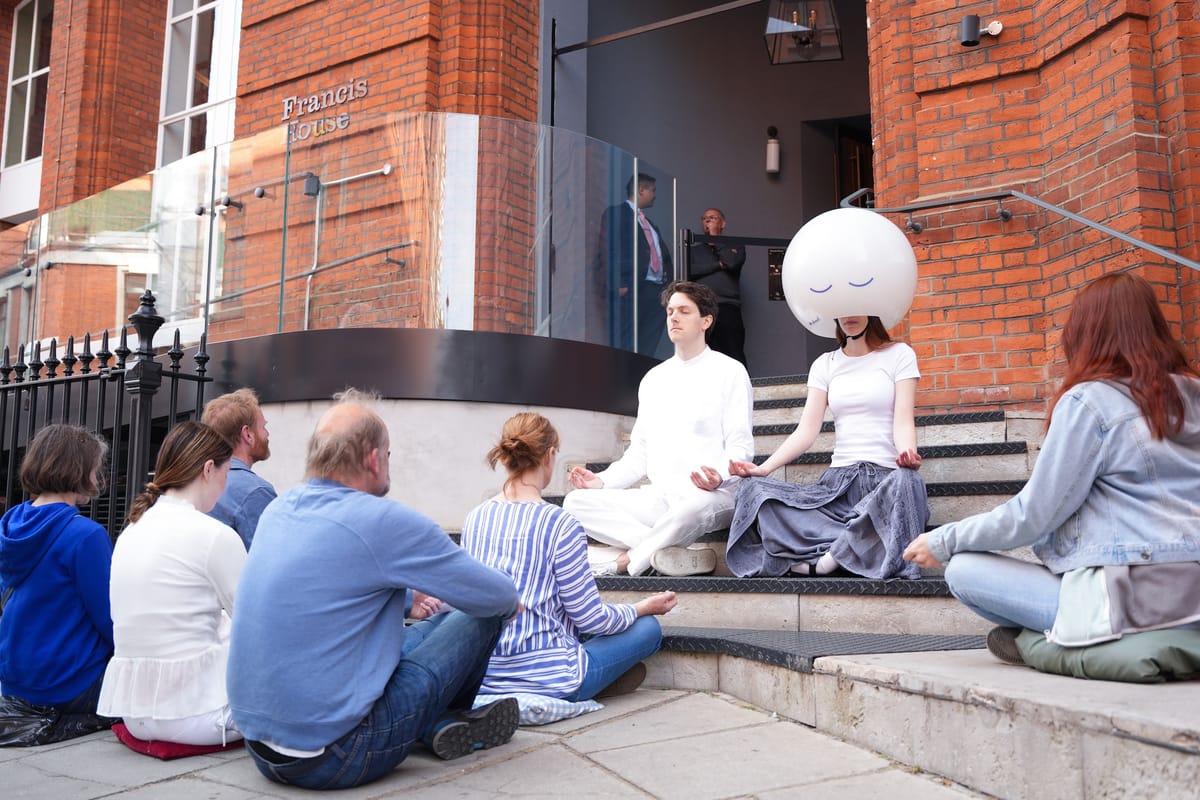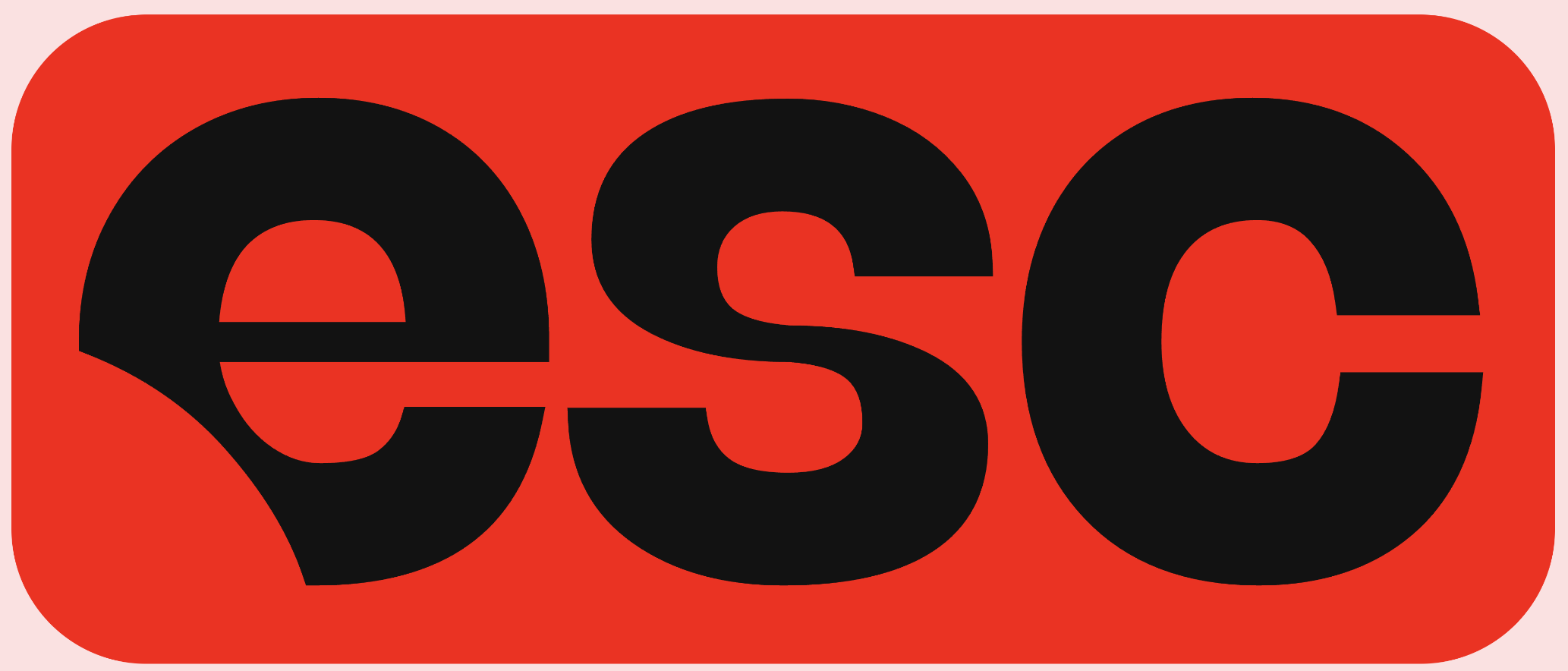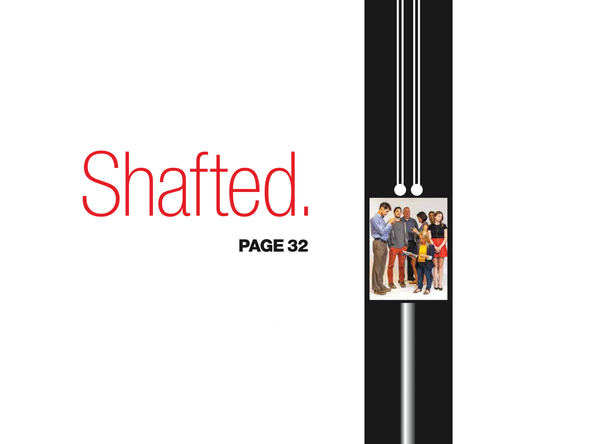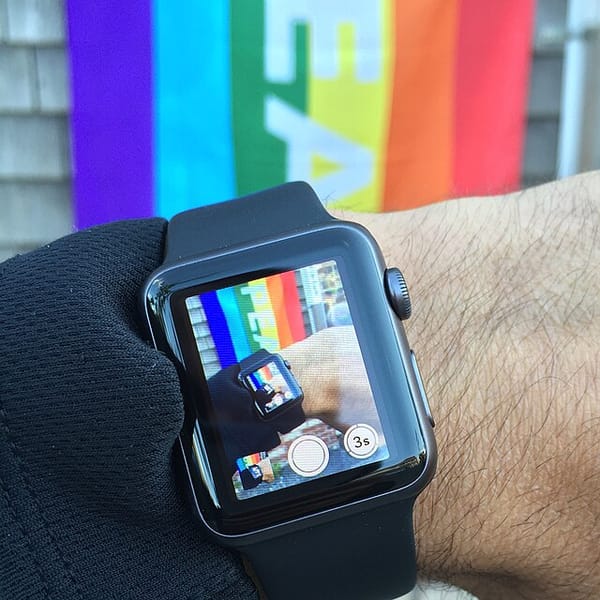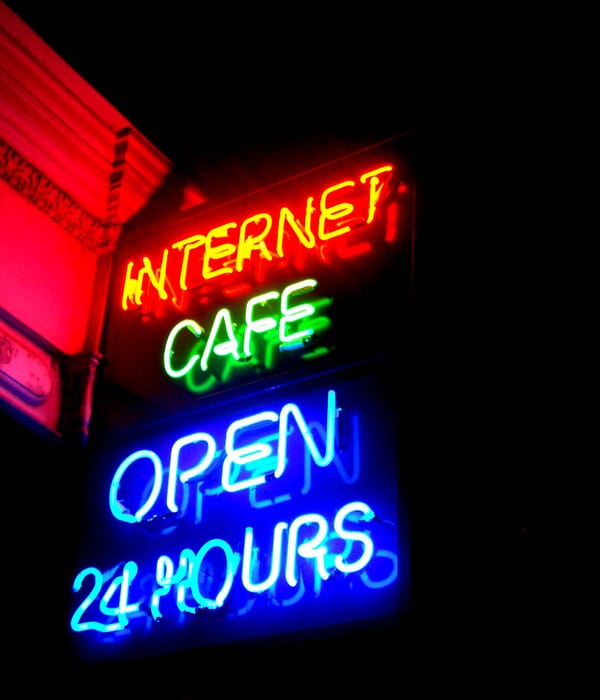From pinkhushing to greenhushing, cowardcore is the dominant trend of this weird era
Your TL;DR Briefing on things worth tracking — and talking about over your next power lunch. *Wink.* This time the thing is post-rainbow capitalism and post-”sustainability,” and the big question we face: Where do we push it next?

The thing is:
This Pride, there’s a proven way to generate engagement on certain corners of the social web — particularly on Bluesky, the microblogging darling of the fediverse. What do you have to “skeet” to get people smashing the like or, um, re-skeet buttons, you might wonder? Well, simply post a list of brands that have scaled back or fully halted their support for Pride. It’s easy since there are so many.
Indeed, anyone at home can try it: here’s a starter pack of 21 corporations whose support, according to Pride organizers, has gone partly or entirely flaccid — including a good few sugar daddies that’d previously been dependable supporters for events in cities large and small:
- Anheuser-Busch
- Booz Allen Hamilton
- Capital One
- Citi
- Comcast/Xfinity
- Deloitte
- Diageo
- Disney
- DoorDash
- Dyson
- Garnier
- Live Nation
- Mastercard
- Nissan
- Nivea
- PepsiCo
- PricewaterhouseCoopers
- Tiffany & Co.
- UPS
- Visa
- Walmart
Rainbow capitalism no longer seems like the easy marketing flex it once did — not now, still the early days of the second Trump administration in the United States, when many CEOs have lost their balls.
This backsliding represents something beyond corporate opportunism. The list reveals how quickly “allyship” evaporates when it meets even minimal resistance, exposing what many activists have argued for decades: these companies never cared about anything beyond their own profits, anyway.
The thing about that is:
There has long been a stark divide within LGBTQ+ circles between establishment gays and lesbians, who fought for rights within existing societal structures, and more radical queers, who sought to challenge those systems entirely. Historian Lillian Faderman once told me the central tension often boiled down to assimilation versus rejection of heteropatriarchal power structures.
Throughout the 2010s, these internal tensions often centered on the presence of both corporations and cops at major Pride parades. Corporate Pride became so pervasive that grassroots organizations like Reclaim Pride Coalition formed as an anti-corporate alternative to the NYC Pride March.
But now, in 2025, there’s some comical unity across that spectrum in the combined focus on the big, bad brands who have made their true colors unmistakably clear — green for greed and little else.
Ten years ago, following the June 26, 2015 Supreme Court ruling that established marriage equality as a constitutional right, corporations were eager to conduct “pinkwashing” — superficial or token gestures in support of LGBTQ+ people to generate positive image. You don’t need to look much further than Target’s peachy “Live Laugh Lesbian” T-shirts, which Soleil Ho appropriately roasted in classic Ho fashion for The San Francisco Chronicle in 2023.
But Target’s retreat reveals the deeper logic of pinkwashing: brands pull their support whenever they get even a tiny bit of the blowback that queer and trans people deal with daily. Target dialed back its Pride merchandising over the past two years in response to right-wing whining about rainbows. This year’s Target Pride collection is noticeably beige, leading cartoonist Molly Knox Ostertag to dub it “cowardcore.”
It can also be pinkwashing if it serves as a distraction to bad stuff elsewhere in the business. Take fast fashion brands pumping out countless rainbow polyester apparel destined for landfills — Pride only for their largely white consumer base in rich countries, while clothes are produced by garment workers of color in the Majority World who often toil in grueling conditions to meet overproduction demands. In 2023, I reported for Good On You that zero of 20 fast fashion brands releasing Pride collections were paying living wages in their supply chain. “There’s nothing empowering about Pride clothing that’s produced by brands that are exploiting and underpaying their workers, certainly including LGBTQ+ people in the supply chain,” I wrote those two Pride seasons ago.
The extent to which pinkwashing seemed to work always frustrated me as a journalist. Facts don’t change based on consumer sentiment. Whether consumers “care” if brands “care” about LGBTQ+ rights or climate science doesn’t change the violations of those rights in garment supply chains or the fashion industry’s non-trivial impact on global carbon emissions.
That’s what made both pinkwashing and greenwashing — the equivalent in relation to environmental issues — so sinister. It’s also what’s made the current trend of pinkhushing feel almost inevitable.
What is pinkhushing? It’s when brands go quiet on LGBTQ+ issues, deleting such language from their websites, rolling back Pride budgets, and basically saying how much LGBTQ+ employees and customers mean to them by saying nothing at all.
The term borrows from climate activism’s “greenhushing” — and these phenomena are intertwined.
“The trend of greenhushing … isn’t really a trend. It’s just brands haven’t been very transparent — and so they’re continuing to not be very transparent,” I said on stage earlier this year at a panel for the British Fashion Council’s fifth-annual Institute of Positive Fashion Forum.
Kati Chitrakorn, CNN Style editor, interjected: “For those who don’t know, what is greenhushing?”
Fair question. I answered, in part, “Greenhushing is the idea that you’re not going to talk about sustainability, essentially. For a long time, as ‘sustainable’ fashion became a movement, a bit of a trend, there was a bandwagon. Now as the regulatory conversation is pushing a lot of people to have concerns about whether they’re complying or not, they're saying OK, well we’re going to stop communicating anything and we’re going in the other direction, and that’s greenhushing. But I think some skeptical people would say, well, you haven’t been transparent all along!”
Off the record, I’ve heard some brands claim they’re muzzled by activists, angry consumers, and governments so mean that they’re now too worried about saying the wrong thing to say anything. (Kind of like how defense contractor Booz Allen Hamilton canceled its WorldPride contract because it worried doing so would endanger its government work in the Trump era.)
It’s hard to feign sympathy when, say, the world’s biggest and most polluting fast fashion brands — the ones rolling back “sustainability” communications — never had substantive commitments to achieving sustainability anyway. The primary material fact about fashion is that its carbon emissions have only grown. Progress on significant issues suggests the largest brands are doing the least.
Greenhushing is irritating because these brands are simply doing what they’ve always done: very little to address core business problems. The only “trend” is that they’re saying even less than before.
With both greenhushing and pinkhushing, any curious skeptic must ask: have they been “hushed,” or are they merely admitting they never really cared in the first place?
Where things get interesting:
The cowardcore corporations represent significant backsliding from even a few years ago, when skincare brands gayly floated through Manhattan streets and major U.S. defense contractors funded the capital’s parade. Back then, criticizing corporations in Pride could get you a stern talking to from their PRs — and sometimes even top-line editors.
In the height of pinkwashing during the late 2010s, even “alternative” media outlets were hesitant to critique corporate Pride support. The same year Vice editors named my long-form reporting among the “Best of 2017,” they killed a piece that critically examined corporations’ role in LGBTQ+ activism — one of the few stories in my career to meet such a fate.
“Killed,” in journalism lingo, means an editor decides not to run a story for whatever reason. Sometimes stories are killed because you’re a hack. (And yes, I would happily kill some of my worst shit.) Stories are also killed for reasons outside your direct control such as the news landscape shifting or top editors philosophically disagreeing with the thrust of your reporting. In this case, it was the latter. I had reported a piece about the fishy rise in the number of corporations that earned top marks in a ranking of corporations for LGBTQ+ equality.
This week, I sifted through my old files to find the drafts, and the introduction to the originally filed story is as follows:
Much has changed in America since 2002, when the Human Rights Campaign (HRC) first surveyed major businesses for its Corporate Equality Index, an annual benchmarking tool for LGBTQ inclusion in the workplace. Back then, the notion that leading corporations might someday emerge as social advocates for queer rights would have likely sounded absurd.
Fast forward to early December, when HRC published its 2017 index, which rated 887 of the highest-grossing US companies based on factors like non-discriminatory policies and parity in employee benefits. This year’s survey found 517 businesses with a perfect 100-point score, 25 percent more than in the preceding year.
“There’s no question that the business community has really been at the cutting edge of workplace equality, and that government has really lagged behind in passing protections,” Sarah McBride, press secretary at HRC, told VICE. “Given the changing political landscape and the questions that arise around what a Trump administration might look like, it heightens the need for corporations to continue to speak out and stand up for LGBTQ workers, customers and families.”
But the underlying story isn’t nearly so straightforward. Many businesses don’t seem driven merely by moral conviction, but also their bottom line—a tangled web of profit and publicity motives.
The article was initially well received by my editor, who oversaw the LGBTQ+ vertical, and sailed through final edits. I spoke with a wide range of sources, including representatives from the HRC, long-time activists and historians, and spokespeople at a few brands including Paypal, who told me, “As a company that stands for inclusion and equality, we knew we had to take action” (since then, Paypal is one of many tech companies to delete “DEI” language from 2025 shareholder reports).
A publication date was set, then the piece never ran. “So, sadly, higher-ups are wanting to kill the corporate equality piece, which I am really disheartened by but at their mercy,” I was told in an email. One point of contention was including sources who spoke critically about the apparent progress.
“There is no conscience in corporate America. Big corporations don’t give a shit about queers, or anyone else—they just care about profit,” author and activist Mattilda Bernstein Sycamore told me in 2017 for the piece. Sycamore was involved with the AIDS Coalition to Unleash Power (ACT UP) in the early ‘90s and Fed Up Queers (FUQ) later that decade. “The gay establishment is obsessed with acquiring straight privilege at any cost, kicking marginalized queers to the side in its endless quest for status within the status quo.”
I was nudged to drop Sycamore and related takes from the piece.
One of the most memorable interviews I conducted was a call in late December 2016 with Michael Bronski, professor of the practice of media and activism at Harvard University and the author of the book “A Queer History of the United States.” It seemed almost inevitable, he told me then, that corporate America would come around to at least superficial support of Pride.
“Corporate sponsorship began happening in the mid-‘70s in small ways and has blossomed slowly,” Bronski told VICE. Having participated in gay activism since the Stonewall era, Bronski has seen how pride parades were often the first site of intervention for companies seeking to engage with gay politics. Activists often directly sought such support. “Even at the beginning of the movement, more mainstream organizations were more than willing to ask for help from corporations, TV stations and other groups,” he said. ”The reality is that they’ve wanted this; they just weren’t getting it until recently.”
Bronski contextualized the uptick in corporate Pride in the way brands have always sought ways to align themselves with their target consumers, white and well-off Americans.
“The larger framework here, which really nobody wants to say much of anything about, is that, from the very beginning, the gay and lesbian movement has largely been a white, middle-class movement—no wonder it works well with corporations.”
This explains why, according to Bronski, you hear corporations loudly oppose bills like HB2 in North Carolina but hardly raise a whimper when it comes to state laws that violate the federal Voting Rights Act. “Why aren’t major corporations intervening on behalf of African American or Latino civil rights? Why don’t they say anything about Black Lives Matter?” he asked.
The killed piece ended with this Bronski zinger:
“It seems to me the question is, how not to be seduced—not to say, ‘Oh my god, Bank of America is on our side! We’ve won,’” he said. “But instead, let’s see where else we can push it.”
Eight years later, that remains the most pressing question: Where else can we push this? Because Pride organizers are facing budget shortfalls as corporate sponsors back out. Pushing back to the corporate status quo — trying to convince corporations to care when they never did — seems a game of diminishing returns.
The thing to talk about over your next power lunch:
Recently, there have been a few themes emerging in my conversations with disparate sources across industries. One is a tendency to get bogged down in terminology and effectiveness. Is this really greenwashing or not; is this really pinkwashing? Is this brand a productive target for activism and reporting? Are movements rallying around the right messages? The feeling of being “in between” is unmoored, untethered, in limbo. Movements seem without leaders. Emergencies and crises seem without effective messaging. Everyone seems exhausted.
Historians will likely look back on this period as a state of transition, defined not by collective fatigue but what we do next.
We must acknowledge that this unfolding polycrisis, where interconnected problems amplify each other, has made many people feel overwhelmed. But that sense of fatigue and overwhelm serves the interests of a small number of powerful people in our society. It’s not a reason to retreat.
The question, as Bronski put it in that killed 2017 piece, is where do we push this next?
If there’s one lesson from the recent history of LGBTQ+ liberation, the answer is act up! Take a lesson from Pride — the real version, not the sanitized slogan!
I sometimes cackle thinking of a pinkwashed product a pal sent me a couple of years back, as I wrote then for Good On You:
“A friend recently texted me a screenshot of a product they saw on Amazon: “The first gay Pride was a riot” read the slogan on the £13.99 t-shirt. As ironic as it is, the shirt is correct. Bank of America wasn’t sponsoring the first Pride, and police weren’t marching, either. We celebrate Pride Month in June in commemoration of the Stonewall riots, in which New York City police officers raided an LGBTQ+ bar and the fed-up patrons—led predominantly by queer and trans people of colour—fought back over four nights. That was 1969. The following year, a protest march marked the first Pride parade.”
While this one event can sometimes seem over-mythologised in queer history, the point is clear: Pride was not founded as an opportunity for corporate sponsorship or a seasonal event to push products. It’s a deeply political protest to a world that perpetuates violence against trans and queer people.
So skeet and reskeet the brands who've backslid on Pride, who are pinkhushing and greenhushing themselves while trans and queer people face violence and hostility and our planet burns. Drag the cowardcore. Vent your anger, but then do something in the real world with it.
Start there, sure. But don’t stop there. Log off. Find your people. It can be messy. It will be imperfect. It takes actually showing up.
And one long thing to read:
“Where do I begin?!” is a natural response to a lot of overwhelming news. I spent the past few weeks speaking to climate campaigners for some answers as to where creative workers might begin to call out the bullshit, even in small ways that do not require creating a spoof wellness app to troll the CEO of the largest PR firm on the planet:
